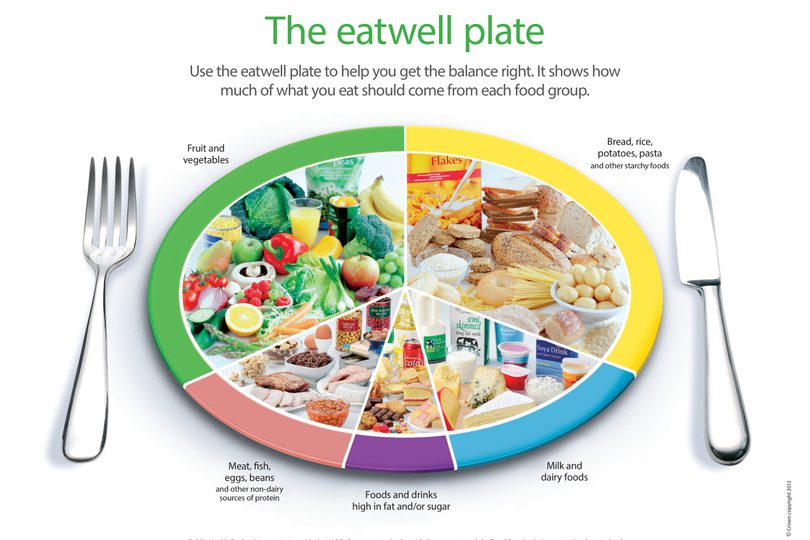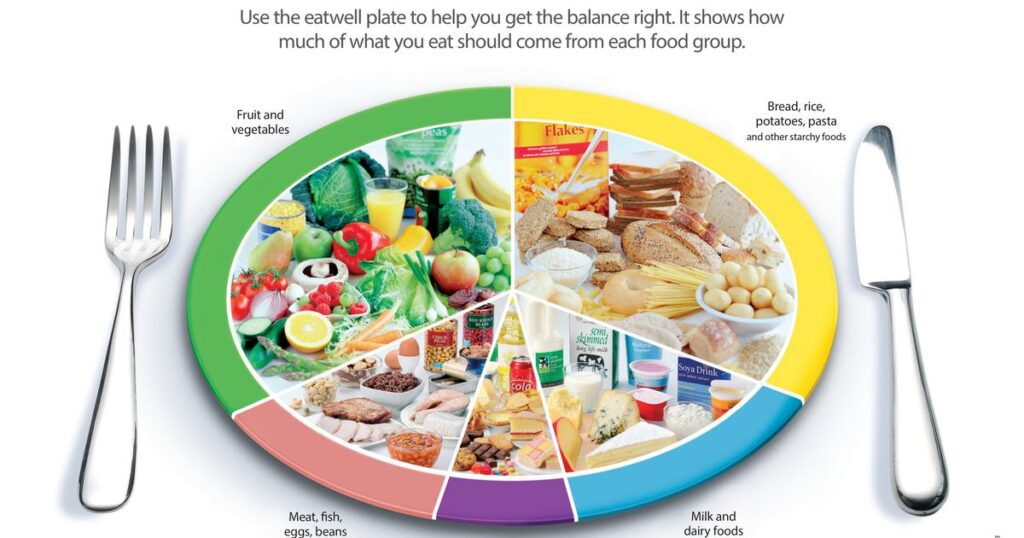
© Public Health England
The Eatwell plate is the UK government’s official food guide about which foods we should eat to achieve a healthy diet. It is essentially a pie-chart depicting the recommended intakes of five specified food groups: fruit and vegetables, dairy products, cereals, meat and processed foods. It was first published 20 years ago – and despite some two decades of nutritional research has not been changed since.
In some countries – notably Australia, the US and Brazil – the official food guide is revised on a regular basis. Some two decades since it was first published, Public Health England has announced that it will revise the Eatwell plate in the light of proposed new recommendations on sugar from the government’s Scientific Advisory Committee on Nutrition.
Then and now
The types of food we eat and the challenges for a healthy diet have changed significantly over the past 20 years. In particular we now know that added sugar is much more harmful to our health than we thought back then. We are now much less convinced that fruit juice – consumption of which is 15 times that in the 1970s – is much healthier than sugary soft drinks. And the need to cut down on red meat in our diets has become clearer, as has our need to reduce saturated fat intake rather than total fat intake.
Many people have rightly argued that the Eatwell plate is now out of date and some recent government publications, such as the new standards for school food published earlier this year, have not referred to it at all. Now is the opportunity to undertake a fully comprehensive review and here are some issues for Public Health England to consider.
What to take account of
1. We need to redefine the food groups on the Eatwell plate. As Susan Jebb, the government’s adviser on obesity, also agrees: fruit juice should not be included in the fruit and vegetable group (and potatoes should be).
2. Healthier and less healthy foods within food groups should be identified. At the moment the cereals group includes salty and sugary breakfast cereals. We think that the guide should make it clear that, while current levels of cereal intake should be maintained, there are some cereals that are healthier than others.
3. The angles of the segments of the plate – showing how much of the five food groups we should eat – also needs to change. Over the last 20 years a reduction in red meat consumption has been recommended by most public health experts. But the guide doesn’t reflect this. The angle for the meat group needs to be made smaller.
4. A perennial and growing criticism of the guide is that – unlike its US equivalent – it gives a place to unhealthy processed foods and even depicts a can of cola. Cola (or other sugary drinks) should be replaced with a glass of water.
5. Some of the foods shown in the old guide have a greater impact on the environment than others. In particular, most of the foods in the meat group have higher associated greenhouse gas emissions than foods in other groups. Then there are less obvious issues such as air miles. Asparagus is shown in the guide but asparagus air freighted to the UK from South America, for example, will have a higher environmental impact than British carrots. One idea might be to design the plate in such a way that more sustainable food items can be found closer to the centre and unsustainable food items closer to the outer layer of the plate. So as you go from centre to outer circle within a group, the environmental burden of the food item increases.
Today we are not just concerned about our diets for health reasons; there are various other considerations that shape our choices, such as environmental sustainability in food production, animal welfare and Fair Trade – and the Eatwell plate needs to take account of these wider concerns. The guide already takes account of practicalities, for example it sensibly only shows foods that are readily available. But we now know that the ways in which we consume our food not only affects our health but that of the planet and therefore the health of future generations. It is unforgivable to ignore this fact when providing dietary advice.
All of these things need to be taken into account when revising things such as the angles of the segments and how and where in the guide foods are depicted. The World Wildlife Fund has produced its own version of the Eatwell plate called the Livewell plate, which shows how this can be done.
Much has been discovered and published during the past 20 years which has changed our understanding of food. Revision of the Eatwell plate – merely to take account of one government report – seems illogical. This rare opportunity should be used to develop a systematic and transparent approach to reviewing current evidence and to undertake a comprehensive review of the Eatwell plate to reflect all of the dietary challenges we face today.
This blog was originally published on The Conversation
This opinion piece reflects the views of the author, and does not necessarily reflect the position of the Oxford Martin School or the University of Oxford. Any errors or omissions are those of the author.
Related Programmes
Food
Oxford Martin Programme on the Future of Food

